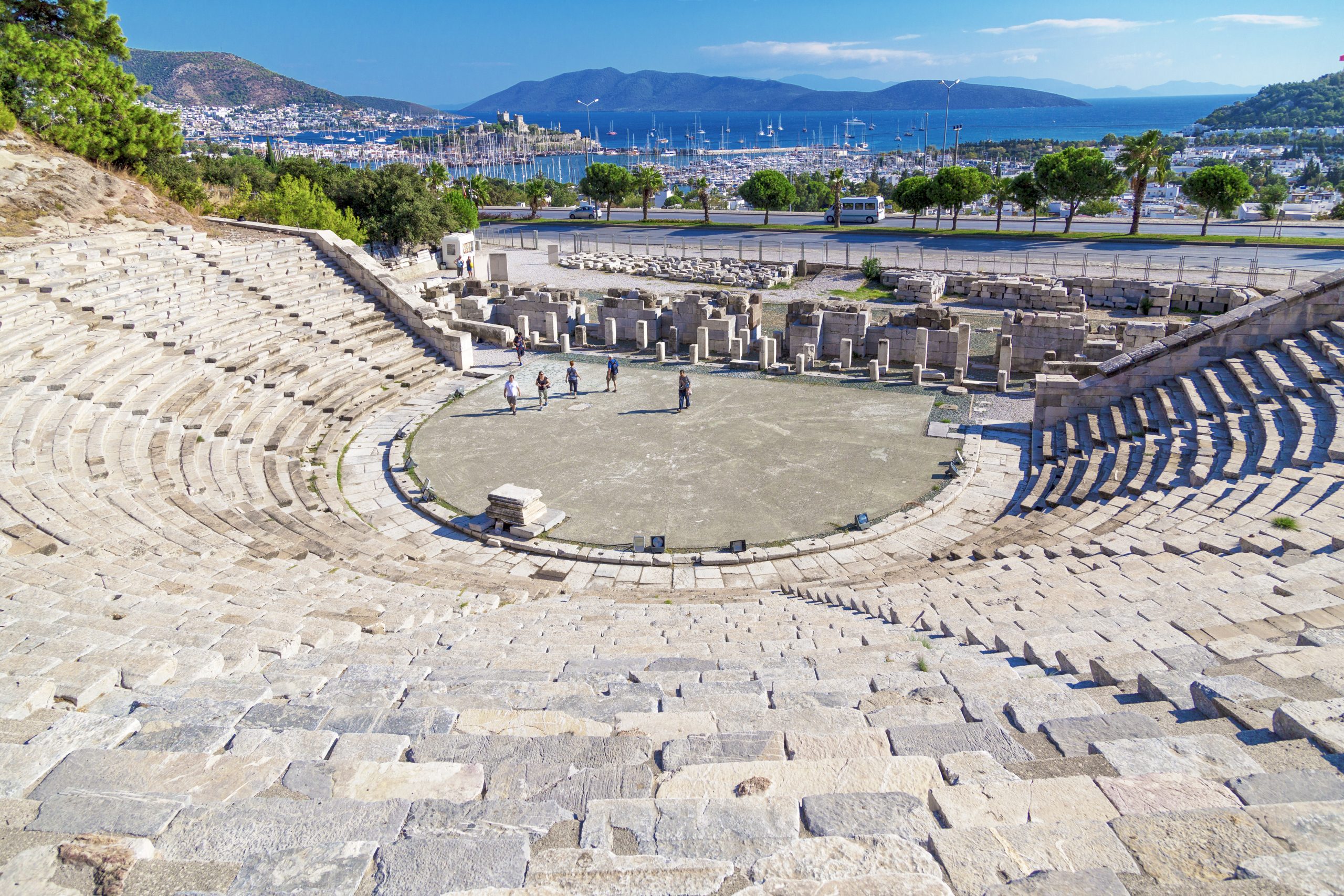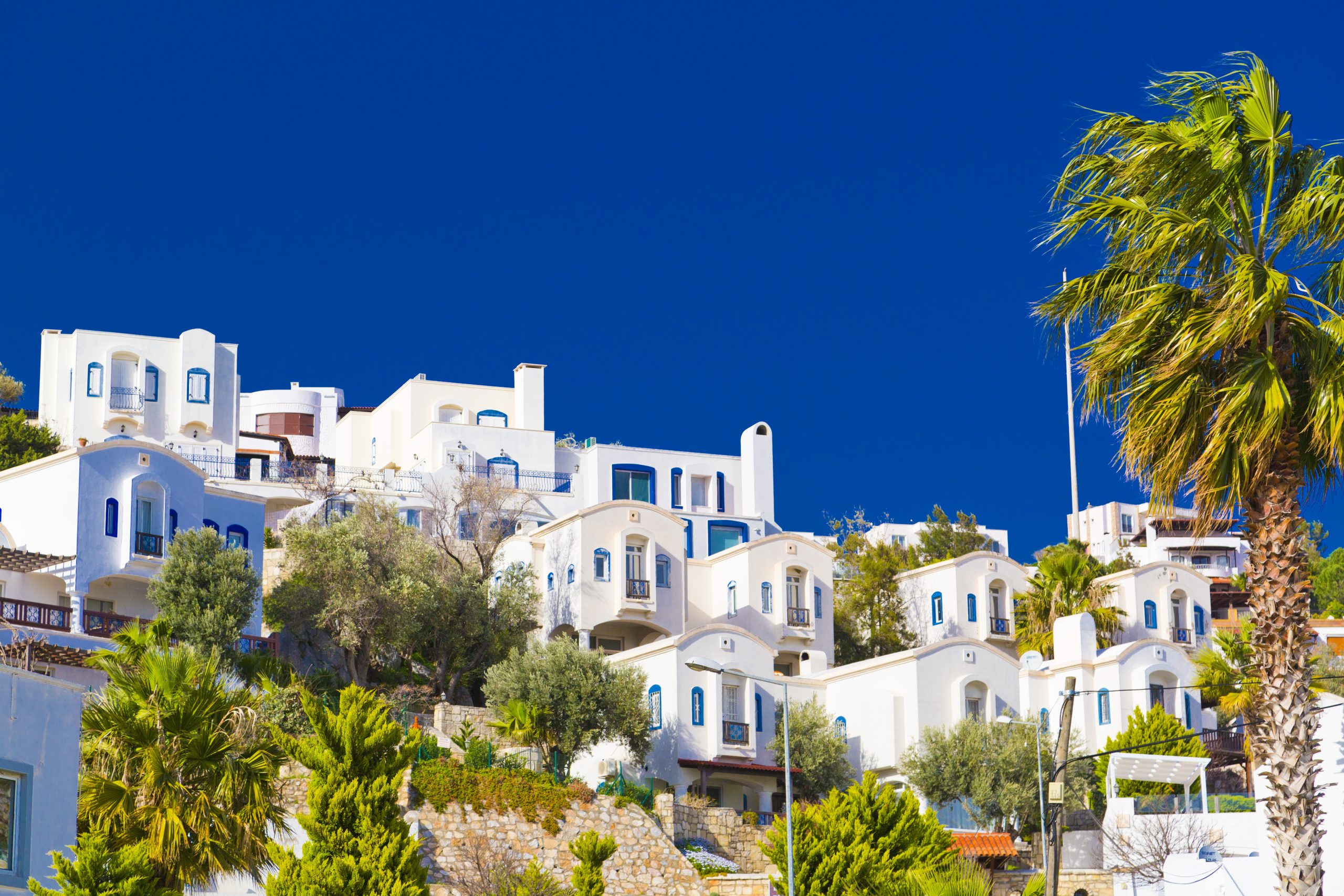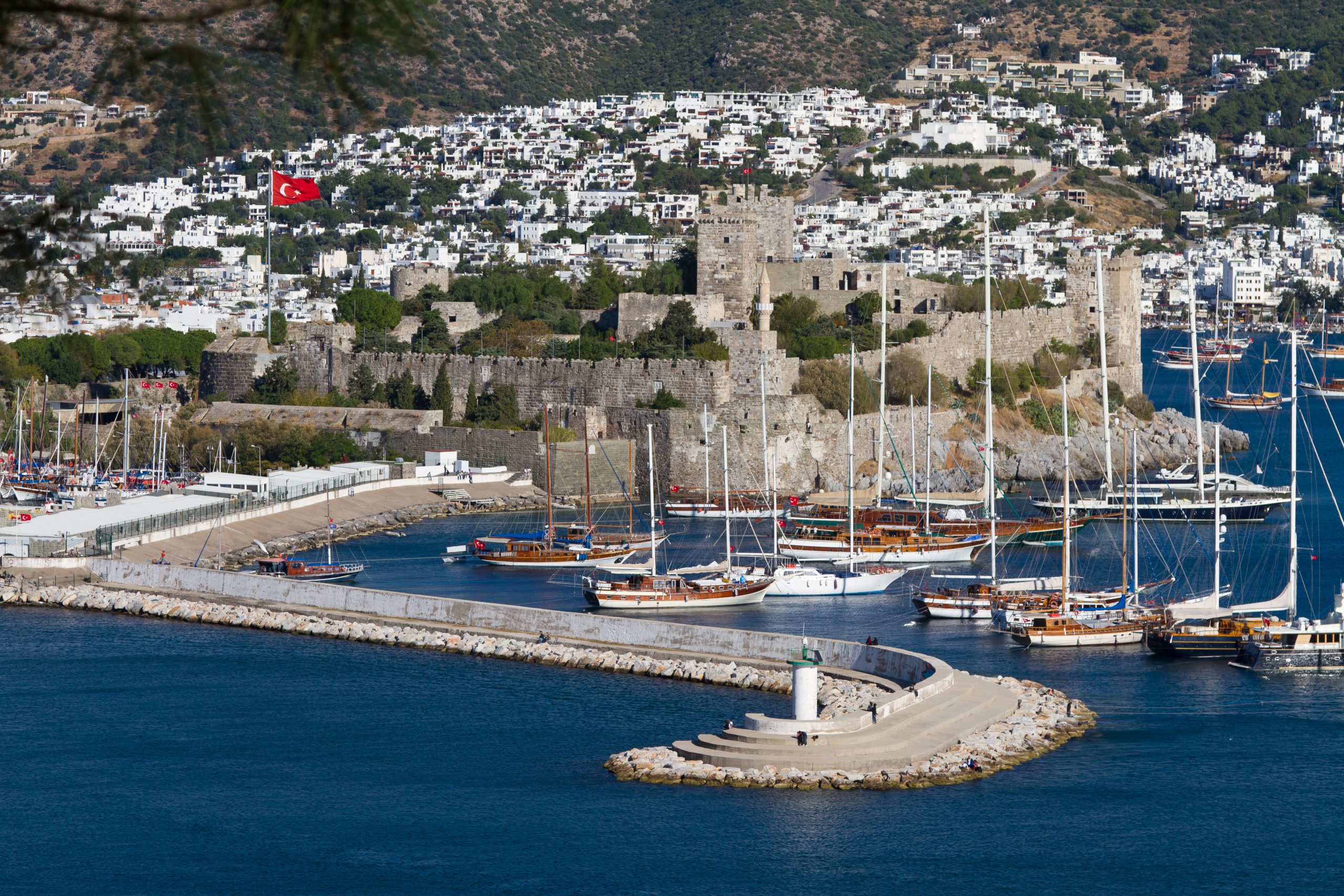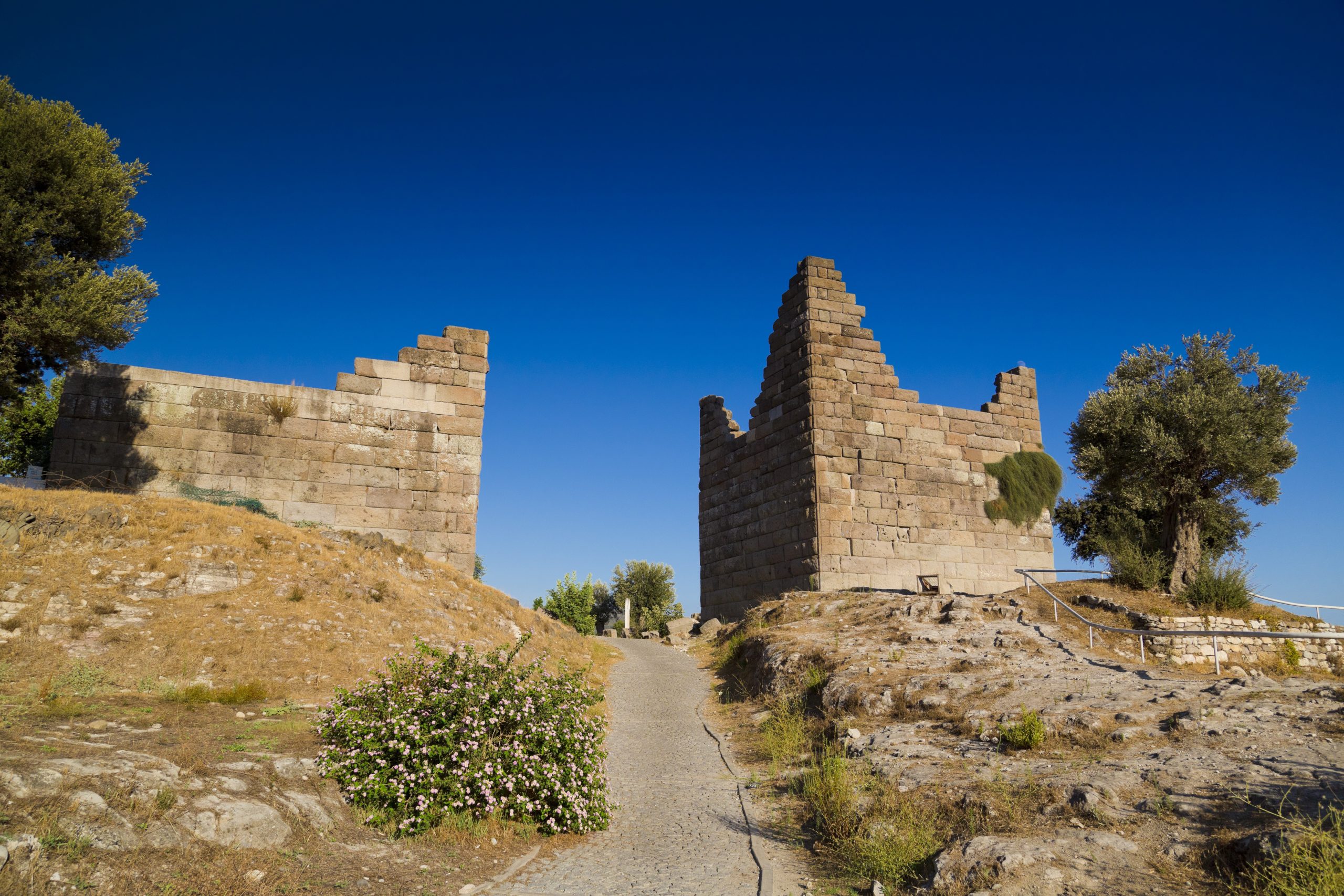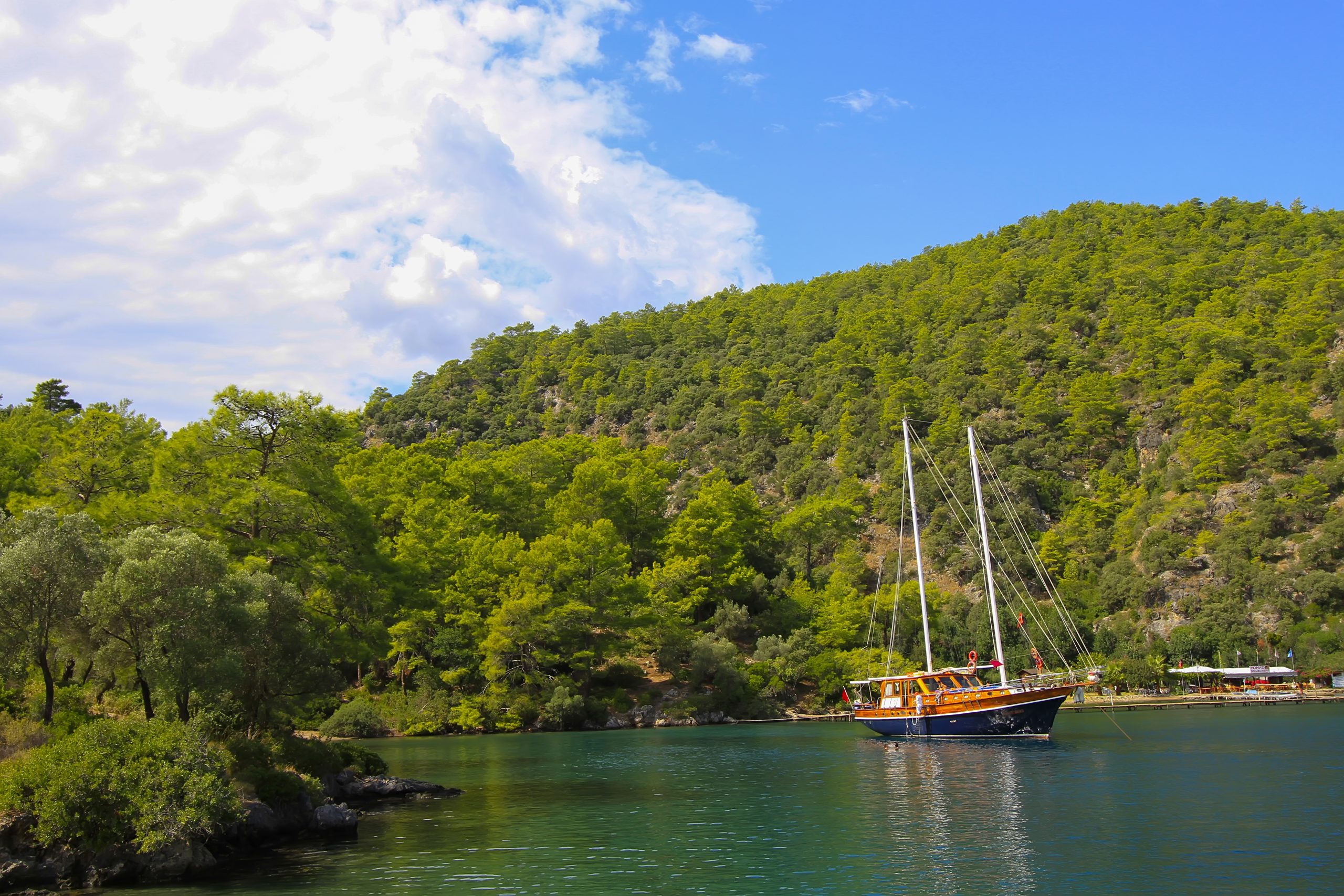A harbor of heritage, where the Aegean wears white. Glamorous yet grounded, Bodrum is both a playground for yachts and a keeper of ancient wonders. Beneath its bougainvillea lies a cosmopolitan heart—filled with music, markets, and Mediterranean ease. One minute you’re exploring a Crusader castle; the next, you’re sipping rosé at sunset by the sea. Signature Sites: Bodrum Castle, Mausoleum of Halicarnassus, Bodrum Marina Atmosphere: Chic, bohemian, luminous Best Experienced: At golden hour, between art gallery and seaside dinner Tastes to Try: Aegean greens, grilled octopus, almond-stuffed pastries
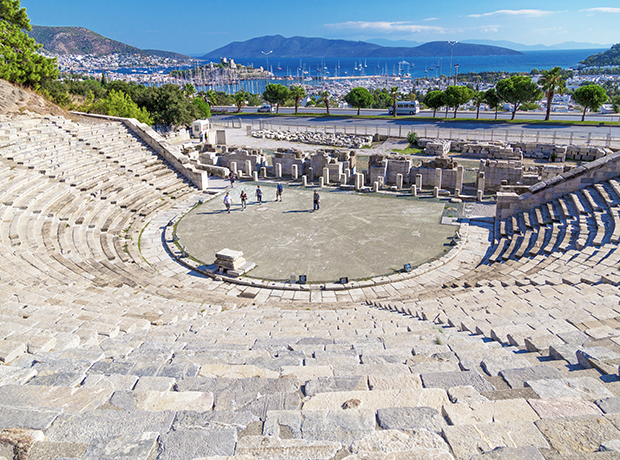
Bodrum Amphitheater
Bodrum Amphitheater
Bodrum Ancient Theater is a magnificent example of classical Greek theatre. A place where you can be part of the audience at a live show and follow in the footsteps of ancient gladiators. It is also a place where you can enjoy the magnificent view of Bodrum, the coastline and the marina.
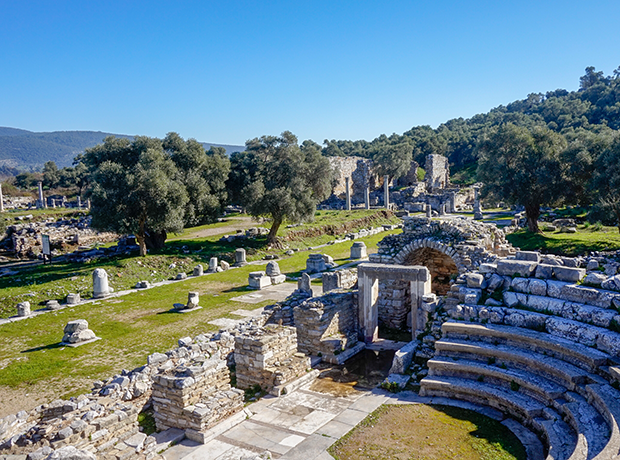
Ancient Iassos
Ancient Iassos
Iassos has been inhabited since the earliest days of history due to its privileged location, its spectacular marble and its abundant fisheries. The city was theoretically founded in the 9th century BC by Greek colonists from Argos and later inhabited by immigrants from Miletus. However, Italian archaeologists have found Minoan houses and Mycenaean pottery, suggesting that the area was inhabited long before the arrival of the Greeks. Iassos is mostly located on a rocky island, except for the city walls and necropolis. One of its most impressive monuments is an enormous mausoleum – a temple tomb in the Syrian style. The burial chamber is covered by a small Corinthian temple, perched on a ten-step crepidoma. Numerous skeletons were discovered in the tomb, which dates back to the Roman period.
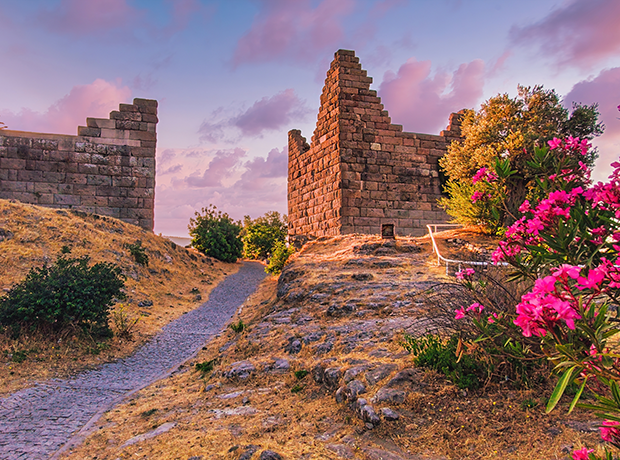
Myndos Gate
Myndos Gate
Since no scientific excavations have been carried out in the Leleg cities of the classical era, including the city of Myndos, detailed information has not been obtained. One of the cities frequently mentioned by ancient writers is the city of Myndos founded by Mausolus, known today as Gümüşlük.It is possible to come across the legendary Myndos Gate and the dusty remains of the once great moat where countless people died and drowned during the bloody siege of Alexander the Great.
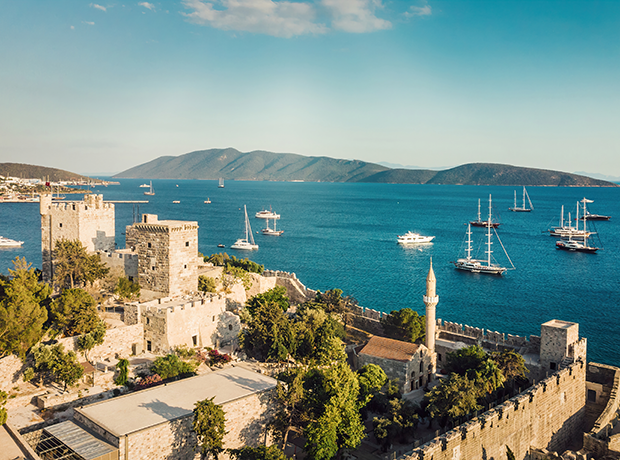
Castle of St. Peter
Castle of St. Peter
Enter the Castle of St. John to enjoy one of the world’s great museum experiences. Built in the early 15th century by the Knights Hospitaller, the castle spans an incredible 30,000 square feet at its base. It’s so grand, in fact, the Knights had to use materials taken from the legendary Mausoleum, one of the Seven Wonders of the Ancient World. Today, the castle and its exhibits proudly take visitors from Turkey’s Bronze Age through Roman times and into the Byzantine era. Behold its five imposing towers – the English Tower, the Italian Tower, the French Tower, the German Tower and the Snake Tower. Visit Carian Princess Hall and view the supposed remains of Princess Ada, sister of the great King Mausolos, who died around 325 BC. Some of the castle’s most fascinating finds, highlighted by a Roman shipwreck and amphora exhibition, are found within its acclaimed Museum of Underwater Archaeology.
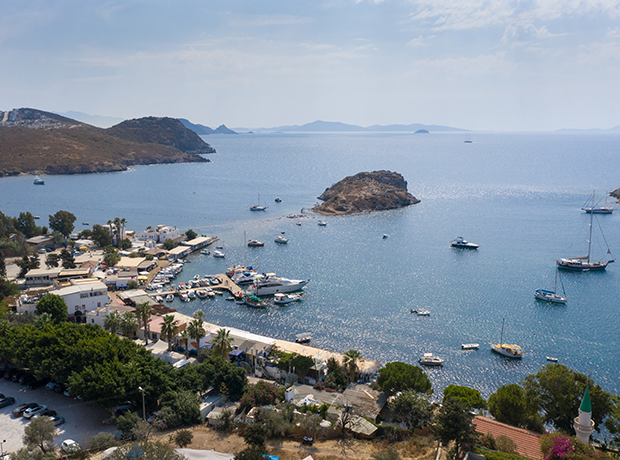
Gümüşlük
Gümüşlük
In Gumusluk, strictly enforced building rules have ensured that the seafront has retained its original appearance and its surprisingly photogenic fishing village charm. Gumus means silver in Turkish. Your feet touch a historic backdrop here.
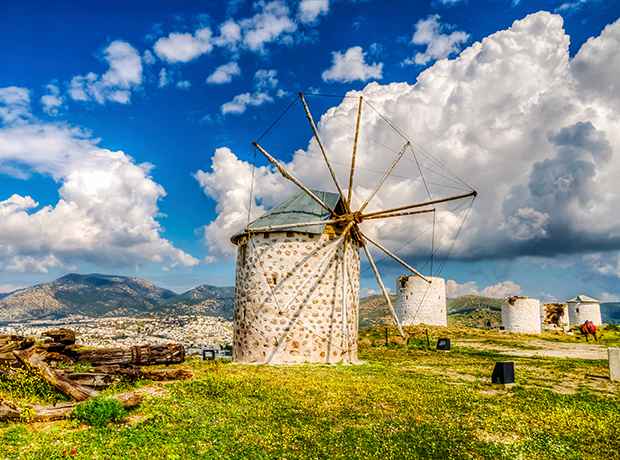
The Windmills of the Bodrum
The Windmills of the Bodrum
The windmills of the Bodrum Peninsula is one of the greatest sights overlooking the Bodrum & Gumbet Bay and the Aegean. The windmills date back to 18th century and they were used till the 70s. Seven of the windmills are located on the hill top between Gumbet and Bodrum. This location is really mesmerizing that the visitors are able to see the Gumbet Bay on one side, and the Bodrum bay on the other side.

